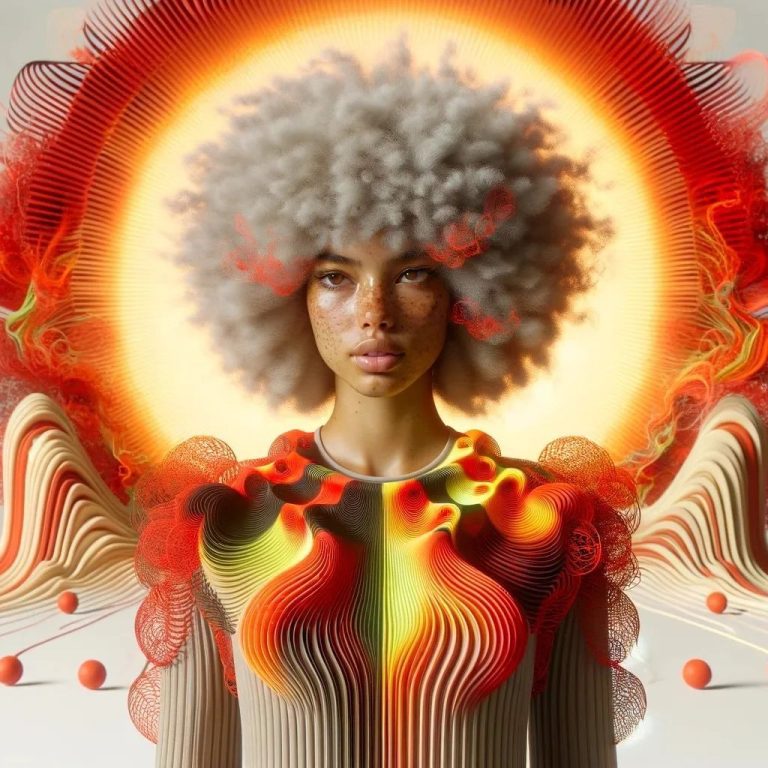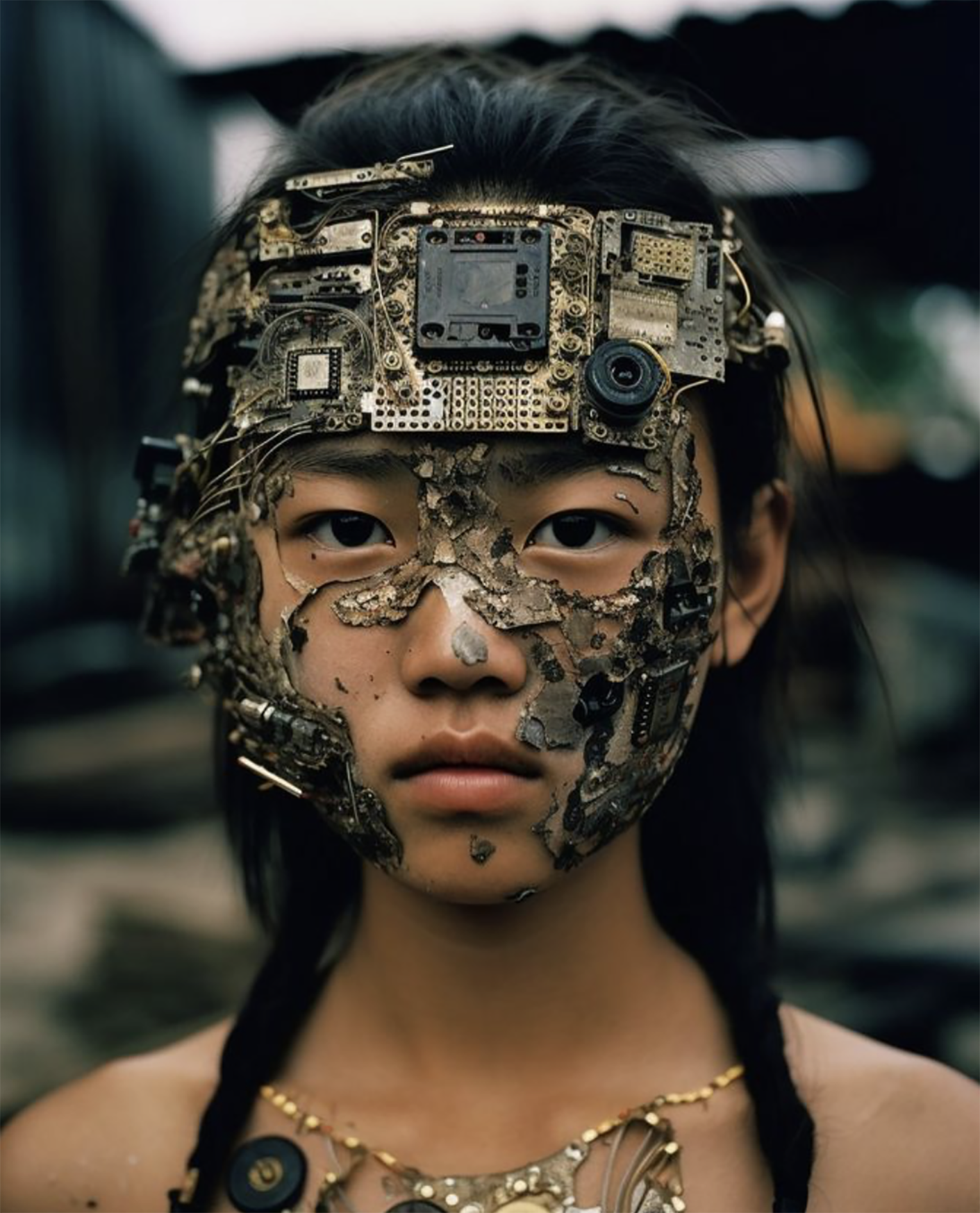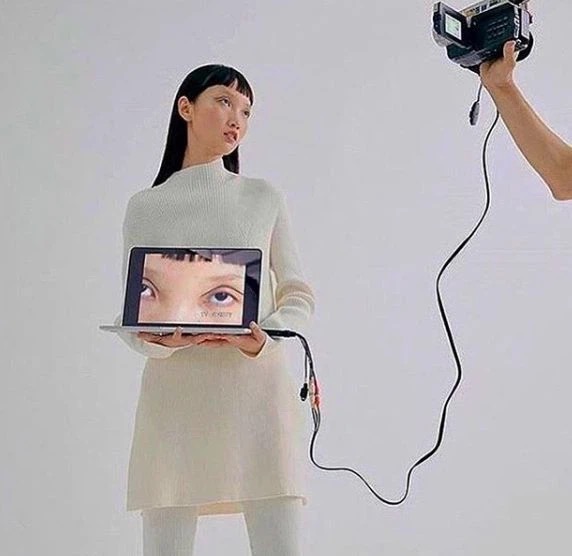In Part 1, GLITCH discussed the fanatic tech-led buzz as AI software has begun to crawl beneath curators, authenticators and collectors, and out-perform them at their jobs. But when evaluating the presence of AI in the art world, what is more ambiguous is whether or not AI can ever become the artist , the creator, and the independent thinker?
It is accepted that AI has vast analytical capabilities when fed data, but recently we have seen new expressions of digital art that are AI generated. Machines have been able to sap information from their initial programming, and create authentically new artistic expressions. The feat is both wondrous, and offers a new landscape of expression. Yet simultaneously, such expressions have been tarnished with negativity due to the data driven inception of such art.
When considering whether machines can become creators, it is easy to be drawn down philosophical rabbit holes, muddied with questions of humanity. The central perplexity is defining what exactly creativity is: Can art that has been devised from data be considered authentically creative and new, or is it merely a reinterpretation? AI machines rely on experiences to create anew, but ultimately isn’t that what humans do over a longer, more unrestricted period of time called life? We consider our personal thoughts and expressions to be “original”, but in fact like those of AI, aren’t they just a reflection of experience?
There was recently an exhibition at New York Museum of Modern Art by Refik Anadol’s named Unsupervised which supposedly allowed an AI machine to “hallucinate” and “dream” new visions, based on feeding it information about the gallery’s existing collection. Unsupervised was intended to be a visionary. How different is this to onboarding a creative gallery curator, or a person to reimagine the space?
In toying with these remarks over AI’s generative capabilities, we end up at the goose-bump inducing question – just how similar to humans is AI? And, is it possible to trust in AI when given power.
AI Manipulation | Is It A Real Threat
Pushing past all the social media stirred hysteria, how dangerous can AI generated images be and what potential can they hold? From encoded messages, to edited scenes, and cut and pasted celebrity profiles, how threatening is forged art.
One pressing concern seems to be that brands will be able to carefully doctor images to imbed their logos and marketing, meaning consumers are further targeted in more manipulative and sly ways. Coupled with the already existing human concern that is AI’s ability to globally displace us from our jobs, homes and consciousness, this potential of AI images seems to be feeding concern over lack of individuality and conscious decision making. Fake news further become more verified and impactful with the creation of dubbed and doctored imagery of events that never really happened. On the global stage, it is often the public’s perception that ends up swaying decision and happenings, and so AI imagery can really begin to edit social understanding.
There are many theorists and academics who would argue that technology has an exponential ability to intervene with the way we think and act, without us being cognizant of the spell we are under, and these sorts of AI images fall neatly into this category of concern.
Is the real threat thus not AI replacing our jobs, but becoming so disguised within industries we perceive to be authentic, that machines are able to pressure us into specific thought processes and ideas? Will all the media, imagery and artwork we consume for leisure, in a bid to widen our minds, might it actually be tightening our minds across political grains of thought?
There is definitely a concern over the independent nature of Artificial Intelligence, and its ability to self develop and grow after initial programming from humans. Yet, there is still a fundamental necessity of an input, no matter how small, to retract an output.
AI itself may not be the pure danger, but rather human’s ill informed of aggressive use of AI to facilitate their control. The more pressing fear at present is how AI can be used to help companies, personalities and politicians looking for exploitative messages for personal gain.
Donier Gaibov, founder of UniWeb, and an entrepreneur who is charting the collision of tech and the creative industries, supported this assessment, explaining to GLITCH that “Any AI is primarily a program and people are behind it, so theoretically it can be manipulative”. We are suredly starting to see an uncomfortable and startling air of propaganda culture in the AI content appearing on our screens, and it isn’t too far flung to imagine this developing further.
The Downlow | GLITCH’s Take On AI Creations
AI creations are alluring, captivating, and a clear sign of how quickly we have been able to develop this technological tool. With self-generative design, a whole new window of art and content seems to have been opened. In speaking with Joe Walker, owner of Symboli, a 3D animation studio experimenting with AI in its practices, GLITCH began to understand that the potential of AI content is infinite. Walker explicated how AI’s “ability to render photographic quality images makes the door for deception and contrivances wide open”. Yet, he aso was quick to add he thinks humans will become attuned and dialed into the nefarious uses of AI.
To end on a more inspiring note, GLITCH quizzed Walker on his thoughts about the future and of our technologically driven art and content world will adapt. He spoke about seeing a future full of creative freedom made distinct by the aid of technology, but also on how our design output of may be completely altered. Art started on a canvas, it has now moved onto screens, but Walker takes it a step further- “I believe we will see the traditional rectangular screen start to become less commonly the primary aspect ratio, and as more AR applications take rise we will embrace experiential design and completely revolutionize the canvas, the page, and the shape we create for”. AI creation isn’t constricted to just the 2D, but holds purpose within the 3D, and the 4D, and who knows what other dimensions we may be inspired to create within.
Written by Hebe Street from GLITCH Magazine





